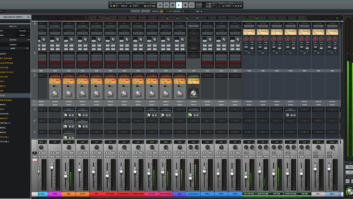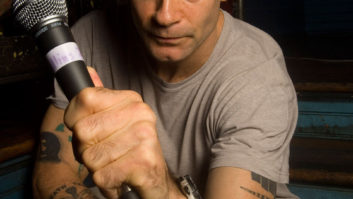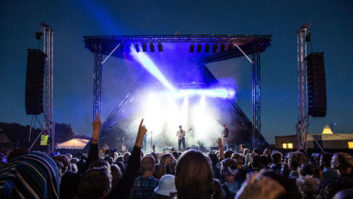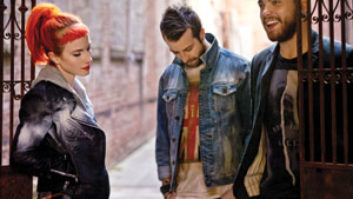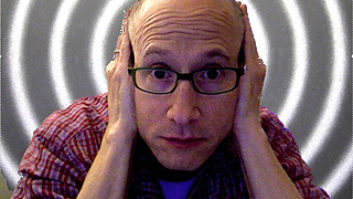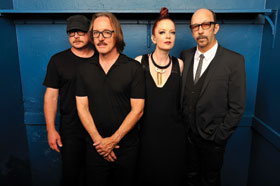
From left: Steve Marker, Butch Vig, Shirley Manson, Duke Erikson
Photo: Steve Jennings
After a seven-year absence, Garbage returned to the stage and they sounded like they’d never left, performing songs from their fifth studio album, Not Your Kind of People, which the band released on its own label, Stunvolume. Shirley Manson (lead vocals), Butch Vig (drums), Duke Erikson (guitar/bass/keyboards) Steve Marker (guitar/keyboards) and touring bassist Eric Avery played to a packed audience in San Francisco at the Warfield Theatre.
Front-of-house engineer Brad Divens is mixing on an Avid Venue Profile. “It’s a great board,” he says. “I’m using Waves Live, SSL, CLA, API, C6, NLS, Decapitator, McDSP, SPL, Massey, Softube and Crane Song Phoenix plug-ins. The only outboard piece of gear I carry is a Dolby Lake Processor, which I run in-line for system EQ. We’ve been using local P.A. for all the shows; at the Warfield, we were on a Meyer Sound system.

Shirley Manson
Photo: Steve Jennings
“Working on a Profile, multi-tracking the shows in Pro Tools and then being able to flip the desk into virtual soundcheck mode gives me the ability to fine-tune and tweak the mix till it’s just right,” Divens continues. “Utilizing snapshots for each song is a plus. Also, since there is basically no stage volume except for Butch’s drums it is like mixing a record every night.”
Monitor engineer Michael Souder is mixing the band on an Avid Venue Profile. “I’ve been using the Profile for a while now,” he says. “I like that the console is readily available around the world and it’s easy to work on. I’m not using any plug-ins or outboard rack gear; the board has everything I need.
“Shirley Manson’s vocal mic is the Shure UHFR with Earthworks WL40V capsule. The band is all on in-ear monitors—Sennheiser EW300 G2s or G3s from Clair, with JH-16 and JH-13 buds.”

Front-of-house engineer Brad Divens
Photo: Steve Jennings
Backline tech Peter Lewis is guitarist Steve Marker’s tech with Marker’s rackmount gear, some of which comprises a Furman M-8x power conditioner, Line 6 HD Pro, Muse Receptor 2+, Line 6 POD, and GCX Ground Control System.
“We only have four microphones on Butch’s live kit,” says drum tech Curtis Clyde. “He has a Beta 91 in the kick, an Earthworks DP30/C as a top snare mic, and two Audio-Technica 4050s as stage-right and stage-left overheads.”
“We’ve always tried to capture the sound of our recorded albums and bring that sonic blend of acoustic and electronic drums to the live experience,” Vig says. “I’ve been rocking a Drum Workshop kit onstage as well as in the studio. On the live stage, the acoustic kit triggers custom samples from our albums via a ddrum3. Most of the songs have loops or sequencers that I play along with. They are all loaded into Ableton Live 8 and I trigger them from the drum kit via the Novation Launchpad. We have a lot more flexibility now than we used to have, we can tweak arrangements or tempos very quickly, and are able to change the setlist every night.

Monitor engineer Michael Souder
Photo: Steve Jennings
“I’ve been using the ddrum3 for a long time! I still think it is the fastest module out there; it triggers around 2 to 3 ms. I also have some compressors and noise gates in case the venue is really loud and the sound pressure of the room starts messing with the triggers, but we rarely need to use them. My drum tech Curtis Clyde set up three identical backlines, and between the DW drums and the ddrum3, all three kits sound great and are very consistent.”
Engineer/programmer/mixer Billy Bush has been with Garbage since 1996. In addition to his role as the band’s studio engineer and mixer, he is also responsible for the stage-left guitar, keyboards, bass, computers, and overall design and implementation of the onstage systems.
“I use two laptops,” he explains. “One runs an Ableton Live session that controls sample and loop playback, Butch’s click track; plus, it also sends MIDI patch changes to both guitar and keyboard rigs, the bass rig, the [Clavia] ddrum3, and also does the more bizarre vocal effects. I use MOTU interfaces—one 828mk3 Hybrid audio interface and one midi express 128. The other laptop is a backup and also allows me to control the Muse Research Receptor via their Receptor Tools software.
“We’ve had a long relationship with Line 6 and when we decided to go back out on tour, they were the natural choice as they had just released the POD HD Pro and the James Tyler Variax,” Bush continues. “The guitar rigs are built around the POD HD Pro. We tend to have about six different sounds per song and currently have about 35 songs rehearsed, so it’s a practical impossibility to accomplish what we do sonically any other way.”

